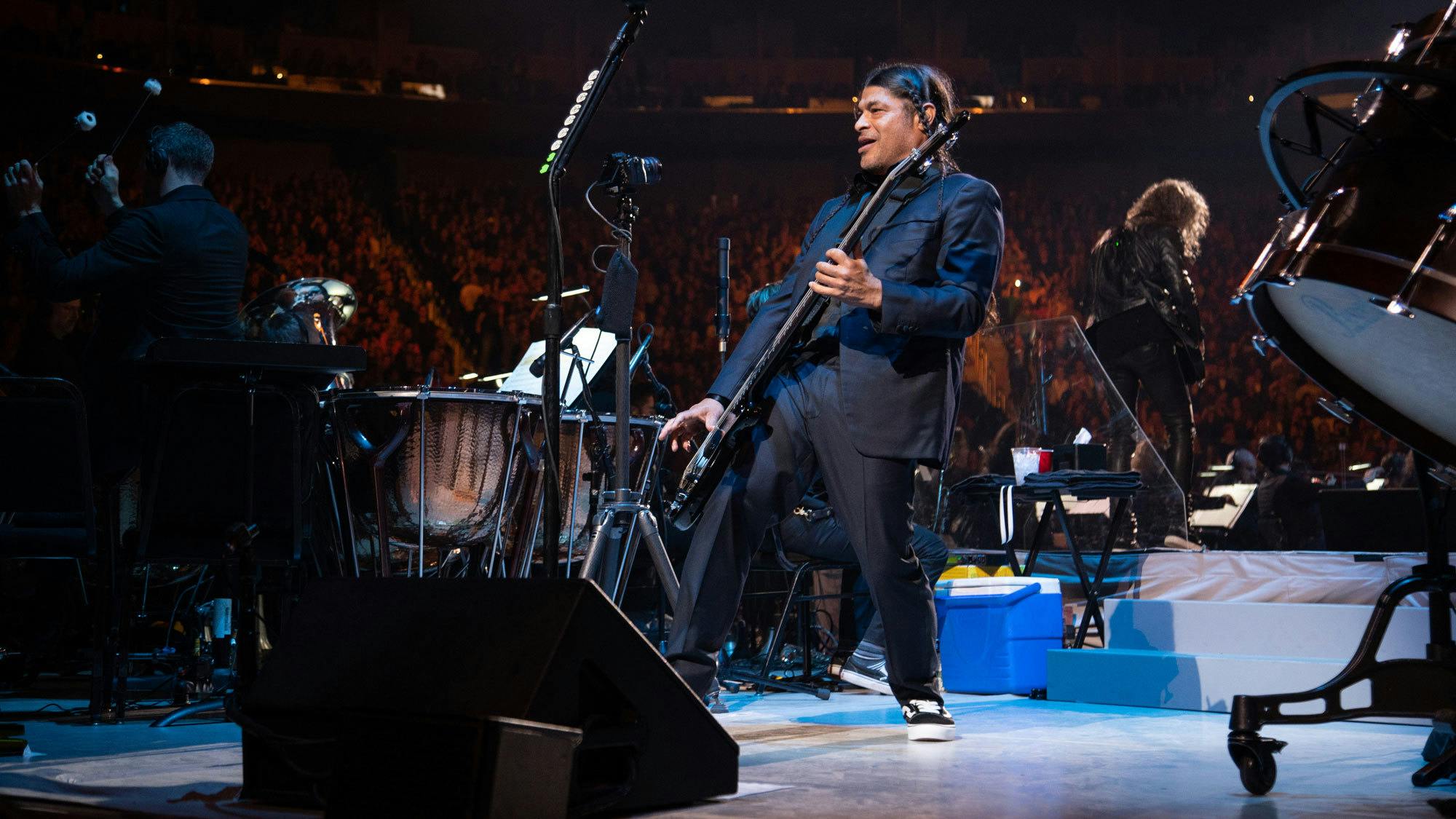In April 1999, Metallica made history. And in September 2019, they did it again. To mark the 20th anniversary of their incredible S&M album, the Four Horsemen rode into San Francisco’s Chase Center for two nights alongside the city’s symphony orchestra. The resulting album – handily titled S&M2 – showcases a career-spanning set from the thrash legends, re-arranged with an almost-80-piece orchestra. It’s a staggering achievement, featuring a breathtaking rendition of All Within My Hands, an awe-inspiring No Leaf Clover and a special double-bass rendition of Cliff Burton’s masterpiece (Anesthesia) – Pulling Teeth.
“It was one of the most powerful experiences that I’ve ever had,” says bassist Robert Trujillo, speaking exclusively to Kerrang! at his home in Malibu, California.
“You’re surrounded by all these stringed instruments and there’s a lot of power in that,” he continues. “It lifts you and you almost feel like you’re flying. It’s almost like this sonic journey that you take with these musicians who probably feel something similar, even though they feel it all the time. It was really special as a musician to experience that side of the sonic spectrum.”
The recording of S&M2 took place across September 6 and 8, and were the first shows performed in San Francisco’s new 20,000 seat arena, the Chase Center, coming just days after their epic European stadium run. So immersed was Rob in the Euro tour that he didn’t actually have time to be nervous about the mammoth undertaking just around the corner, laughing that the pressure of his and Kirk Hammett’s nightly cover doodles provided more than enough stress.
“I remember James [Hetfield] coming in the dressing room a week or so before and asking, ‘Are you guys nervous?’” he explains. “And we were like, ‘Actually, no!’ Because Europe was such an intense run for us that it’s hard for anything to outdo the nerves you feel when it’s just two of you in a stadium playing some cover songs in a different language.
“We were actually very excited about it and not nervous; I love that feeling when you can go in with a different kind of nervousness. For me it was the excitement of doing something that I’d personally never done before, to feel the power of the orchestra, and to know that everybody in that building is absolutely excited and thrilled to experience this side of Metallica.”
